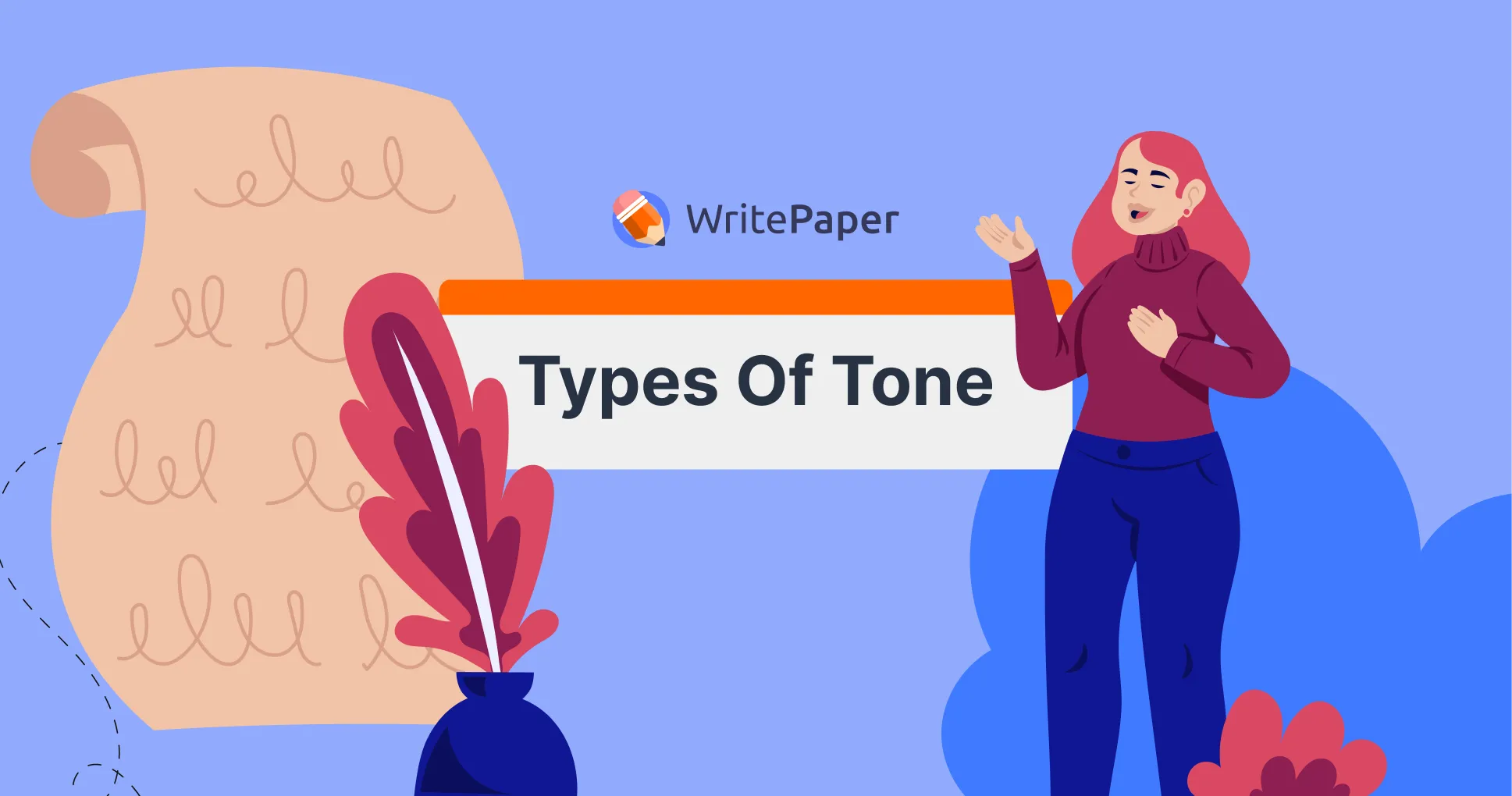In this article, our research proposal writing service experts will empower you to understand the formatting of a research paper in academic writing. You'll explore various types of research papers and tailor your format to the specific demands of your project. Learn how to format a research paper in APA, MLA, ASA, and Chicago styles and demystify the art of citation in each. Gain insights into crafting a well-structured, impactful paper, and join us as we unlock your research paper's true potential and elevate your academic writing skills to new heights!
Are Your Ideas Trapped in the Formatting Labyrinth?
Let our experts craft you a finely tuned, academically dapper masterpiece!

APA Paper Formatting
For formatting research papers in APA Style, follow these key guidelines:
- Choose a standard font, such as 12 pt Times New Roman or 11 pt Arial.
- Set the margins to 1 inch on all sides.
- Use double spacing throughout the text.
- Include an APA running head on each page if the paper is for publication.
- Indent the first line of each paragraph by ½ inch.
Meanwhile, you can always rely on our academic help with your 'write papers for me' requests and read about how to write an acknowledgement for a research paper!
Title Page
The title page is a crucial component of APA Style formatting. It should include a running head, title, author name, affiliation, and date.

Running Head
A running head is a shortened version of the title that appears at the top of each page. It should be in all caps and positioned in the left margin.

Headings
Reference page
The reference page lists all the sources cited in your paper. It should be formatted according to APA Style guidelines, which include a hanging indent, author-date citations, and specific formatting for different types of sources.

In-text Citation
In APA, in-text citations include the author's last name and the publication year. They can be integrated into your sentence or enclosed in parentheses.
Author's Name in the Sentence:
- Smith (2018) argued that...
- According to Smith (2018),...
Author's Name in Parentheses:
- This theory has been widely accepted (Smith, 2018).
- The results were inconclusive (Jones & Lee, 2019).
No Author:
- When no author is available, use the first few words of the reference list entry and the year ('Title of Article,' 2020).
Examples
Book:
- Smith, J. R. (2017). The Art of Research. American Psychological Association.
Journal Article:
- Brown, M., & Davis, S. (2020). Experimental Findings in Neuroscience. Journal of Advanced Research, 32(5), 123-135.
Online Source:
Johnson, L. (2019). The Digital Age: A Comprehensive Overview. Retrieved from https://www.examplewebsite.com/digital-age
MLA Paper Formatting
Research paper formatting in MLA style follows these guidelines:
- Select a legible font, such as 12 pt Times New Roman.
- Set the margins to 1 inch on all sides.
- Use double spacing throughout the document.
- Indent the first line of each paragraph by ½ inch.
- Capitalize headings using title case.
Title Page
The first page of an MLA-style paper requires a heading that includes the following information:
- your full name
- instructor's name
- course name
- due date

Page Header
A header should be placed at the top of every page in your paper. It should contain your last name and the page number.

Works Cited Page
The Works Cited page, located at the end of your paper, provides a comprehensive list of all the sources cited. Entries follow a specific format:
- Author(s): Last name, first name.
- Title of Work: Italicized with title case.
- Source: Journal, book, or website.
- Publication Year: Enclosed in parentheses.
- Page Numbers: For print sources.
- URL: For online sources.

In-text Citation
MLA in-text citations typically include the author's last name and the page number in parentheses. The format can vary based on whether the author's name is included in the sentence or enclosed in parentheses.
Author's Name in the Sentence:
- Smith argued that 'the sky is blue' (25).
- According to Smith, 'the sky is blue' (25).
Author's Name in Parentheses:
- This theory has been widely accepted (Johnson 42).
- The results were inconclusive (Smith and Lee 56).
Examples
Book:
- Smith, John. The Art of Research. American Literary Press, 2017.
Journal Article:
- Brown, Mary, and Susan Davis. 'Experimental Findings in Literature.' Journal of Advanced Research, vol. 32, no. 5, 2020, pp. 123-135.
Online Source:
- Johnson, Laura. 'The Digital Age: A Comprehensive Overview.' www.examplewebsite.com/digital-age.
Have Difficulties With Your Research Paper?
Click below to order a meticulously formatted paper!

ASA Paper Formatting
Here are the main guidelines for formatting of a research paper in ASA style:
- Use a standard font like 12 pt Times New Roman.
- Maintain 1¼ inch margins on all sides.
- Double-space the entire document, including the references.
- Include a separate title page with the paper's full title, author's name, and institution.
- Number pages consecutively, starting with the title page.
- Indent the first line of each paragraph by ½ inch.
- Use ASA-style citations within the text and provide a comprehensive references section at the end.
Title Page
- Title: Center the full title of the paper roughly one-third of the way down the page.
- Author's Name: Place your name below the title, which is also centered.
- Institutional Affiliation: Center the name of your institution below your name.
- Word Count: In publications, word count is required on the title page.
- Running Head: Include a short version of the title (the running head) in the upper right corner of each page, including the title page.
- Page Number: Add the page number in the top right corner of the title page, beginning with "1."

Headings
- First-Level Headings: Bold, all caps, and centered.
- Second-Level Headings: Italicized, title case, and left-aligned.
Third-Level Headings: Indented, italicized, sentence case, with text starting on the same line.
Reference Page
The ASA reference list, found at the end of your paper, contains all the sources you have cited. Each entry should include the following information:
- Author(s): List the last name(s) followed by the first name(s).
- Publication Year: Place the year in parentheses.
- Title of Work: Italicize the title and capitalize all major words.
- Source: Specify the type of source, such as a journal, book, or website.
- DOI or URL: Include the digital object identifier or URL for online sources.

In-text Citation
ASA in-text citations typically include the author's last name and the publication year, with variations based on whether the author is named in the text or included in parentheses.
Author's Name in the Sentence:
- Johnson (2019) argued that...
- According to Johnson (2019),...
Author's Name in Parentheses:
- This theory has been widely accepted (Johnson 2019).
- The results were inconclusive (Smith and Lee 2018).
Examples
Book:
- Smith, John. 2017. The Art of Research. American Sociological Association.
Journal Article:
- Brown, Mary, and Davis, Susan. 2020. 'Experimental Findings in Sociology.' Journal of Advanced Research 32(5): 123-135.
Online Source:
- Johnson, Laura. 2019. 'The Digital Age: A Com
Chicago Paper Formatting
Chicago style offers two citation methods: author-date with a reference list or footnotes with a bibliography. Choose one and use it consistently in your paper.
The reference list or bibliography goes at the end of the paper, with both styles following similar formatting rules:
- Use a standard font like 12 pt Times New Roman or 11 pt Arial.
- Set 1-inch margins on all sides.
- Double-space the entire paper.
- Include a title page.
- Add a running head on each page if submitting for publication.
- Indent the first line of each paragraph by ½ inch.
- Follow APA guidelines for headings.
- Use APA in-text citations for references.
- List all sources on a reference page at the end.
Title Page
For a Chicago-style title page:
- Title (Centered on the page, about one-third down)
- Subtitle
- Your Name
- Course Name
- Instructor's Name
- Date

Headings
Use Chicago-style headings, which allow up to five levels. The first level is centered and bold, while subsequent levels vary in alignment and emphasis (italic, bold, etc.). Consistently follow the Chicago guidelines for these headings.
Bibliography or Reference List
The Bibliography (for NB) or Reference List (for AD) is located at the end of your paper and lists all the sources cited. Entries follow specific formats:
- Author(s): Last name, first name.
- Title of Work: Italicized with title case.
- Source: Journal, book, or website.
- Publication Year: Enclosed in parentheses.
- Page Numbers: For print sources.
- URL: For online sources.
In-text CitationIn the Chicago NB (Notes and Bibliography) format, in-text citations often appear as footnotes or endnotes, while the Chicago AD (Author-Date) format employs parenthetical citations. The format can vary based on whether the author's name is included in the sentence or enclosed in parentheses. Chicago NB Format:
- Smith argued that 'the sky is blue.' ¹
- According to Smith, 'the sky is blue.' ²
Chicago AD Format:
- (Smith 2017, 25)
- (Smith and Lee 2018, 56)
Examples
Book (Chicago NB):
- Smith, John. The Art of Research. American Literary Press, 2017.
Journal Article (Chicago AD):
- Brown, Mary, and Susan Davis. 2020. 'Experimental Findings in History.' Journal of Advanced Research 32, no. 5: 123-135.
Online Source (Chicago NB):
- Johnson, Laura. 'The Digital Age: A Comprehensive Overview.' www.examplewebsite.com/digital-age.
Whether you're working on educational research topics in psychology, literature, sociology, or history, understanding how to format your paper is the key to presenting your findings with precision and authority.
How the Choice of Format May Vary Based on the Type of Research Paper?
The type of paper you're working on plays a significant role in determining the most suitable college research paper format. For instance:
- Argumentative Papers: These often follow formats that highlight the thesis statement, counterarguments, and supporting evidence. In APA or MLA formats, clear citations and references are key.
- Analytical Papers: These may employ a variety of formats depending on the discipline, but clarity and logical flow are always crucial. APA or MLA can work well, depending on the subject.
- Empirical Papers: APA format is commonly used for empirical research papers due to its focus on methodology, results, and statistics.
- Literature Reviews: A literature review might follow APA, MLA, or Chicago styles, depending on the subject area. Consistent citation and referencing are essential.
- Survey Research Papers: APA or ASA (American Sociological Association) formats are often used for survey research, emphasizing methodology and results.
To Sum Up
In the world of academia, mastering different types of research paper formatting and the art of citation is your passport to success. Whether it's APA, MLA, ASA, or Chicago, each format has its nuances, and understanding them is crucial. With a well-structured outline, clarity in in-text citations, and a meticulously organized reference list, you're poised to navigate the complexities of research paper writing. As you embark on your academic journey, remember that precise formatting and citing not only uphold the integrity of your work work but also enhance your scholarly impact.

.webp)



.webp)